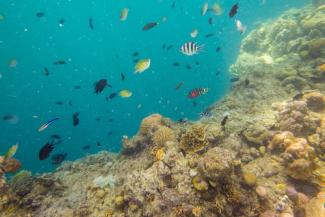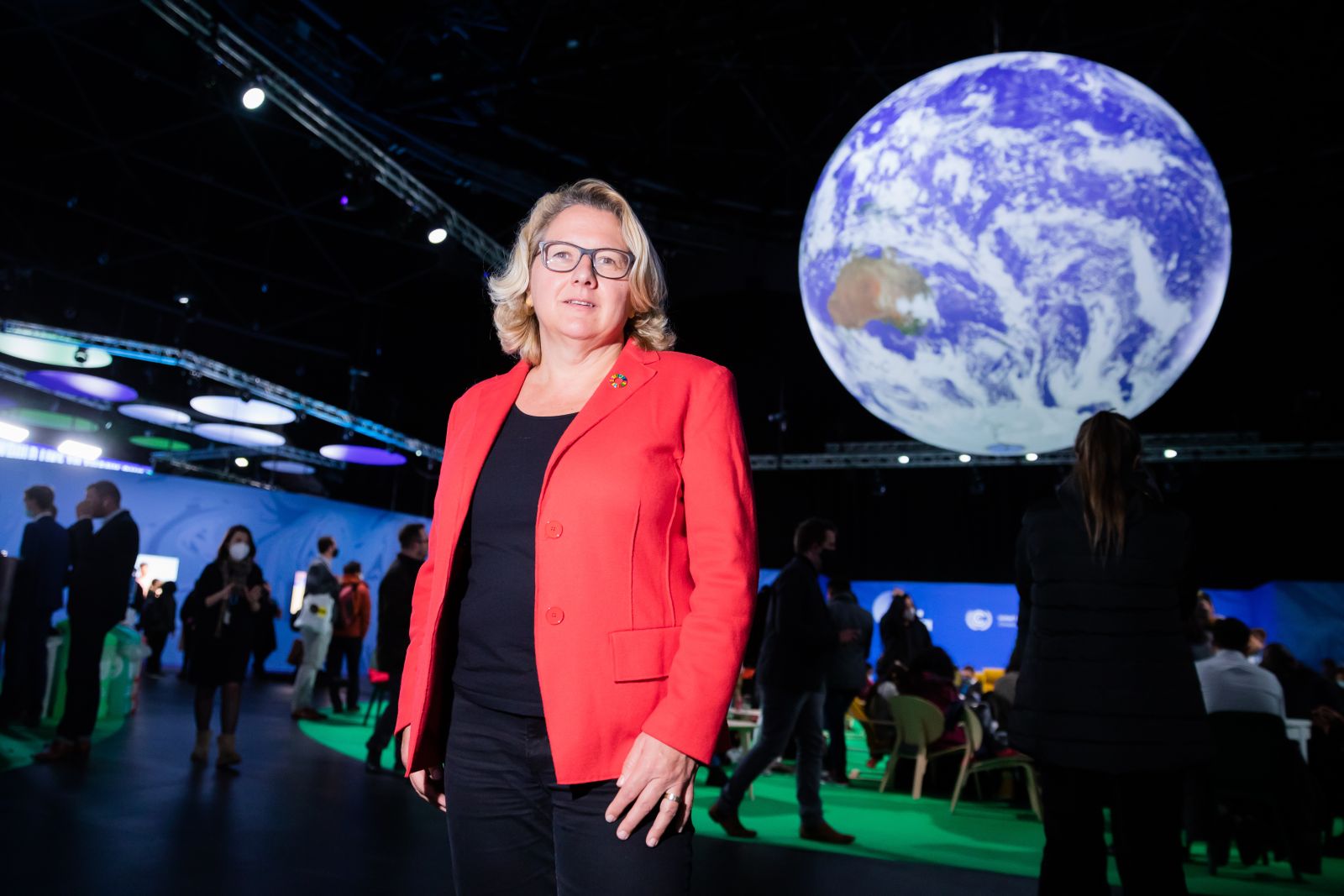Global governance
Coordinating the willing

The international community made major environmental commitments last year by adopting the Sustainable Development Goals (SDGs) and the Paris climate agreement. Limiting global warming to at most two degrees and striving to keep it below 1.5 degrees will require the radical decarbonisation of national economies, which in turn has implications for the financial sector. If the multilateral goals are to be achieved, green finance will have to become the priority.
Green finance is not just about funding public and private-sector investments in climate mitigation and adaptation, though that is important. Nor is it enough to focus on preventing and reducing environmental damage in general. The financial sector’s impact on real economies is so substantial, however, that more is needed (Lindenberg 2014). Green finance must fund public policies geared to sustainability in environmental, economic and social dimensions.
In this context, international financial institutions (IFIs) must play three essential roles. They must:
- be pioneers in considering sustainability issues when making funding decisions,
- build coalitions with the ultimate goal of improving global governance in the financial sector and
- mobilise private-sector capital for investments that serve sustainability.
Of course, every IFI has a specific mandate and must rise to the new challenges in a way that fits that mandate. To keep things simple, however, I will not delve into those details in this essay, but focus on what applies to all IFIs.
Consider shadow prices
IFIs must be at the forefront of putting green finance into practice. They need strategies to mainstream sustainability concerns in their day-to-day business. One way to do is voluntary commitments to assessing the climate risks and carbon footprints of any investment before granting loans. IFIs should explicitly promote low-carbon investments.
It would obviously be useful if the international community introduced some kind of global price or tax so carbon emissions became a core component of business calculations. Unfortunately, such global carbon pricing is not politically feasible yet – and it will probably not be feasible for a long time. IFIs should therefore use notional “shadow prices” for carbon when calculating investments. Shadow carbon prices will automatically make polluting investments look more expensive than greener alternatives.
Some IFIs are already taking this approach – and so are some bilateral development banks and private-sector companies. It is a good way to ensure future investments become more climate-friendly.
Green finance must not only take climate change into account however. Other aspects of environmental sustainability matter too, including the protection of biodiversity, for instance, or the health of soils. Moreover, sustainability is not only about the environment, but also about the long-term viability of enterprises and the social inclusion in the sense of no one being left behind by development. Accordingly, financial institutions must pioneer, experiment and develop new approaches for tackling all related issues. The IFIs must rise to this challenge. So far, it is only a niche element of their business. It must become a core issue.
Now is a good time to revise IFI governance and align it to the SDG agenda. After all, the group of 20 leading economies (G20) is set to consider IFI governance in coming months. The main reason is that emerging markets demand more say in multilateral institutions, especially the International Monetary Fund. This is an opportunity to align the IFIs to the multilateral SDGs rather than to merely improve the status of individual national governments.
Coordinate the willing
The second thing IFIs are predestined to do is building coalitions of green financiers. It has become evident again and again, including at the climate summit in Paris, that the best way to escape from multilateral gridlock is to form coalitions of the willing. The IFIs are the best placed agencies to convince central banks, commercial banks and institutional investors of the merits of green finance.
Collective action is indispensable. The problem is that an individual financial institution’s competitive position is weakened if it uses ambitious shadow prices in internal calculations, implements ambitious internal sustainability guidelines and thus internalises costs that the market, so far, tends to ignore. These costs are real, so they need to be considered, but they are invisible in market exchange because they are not part of the price-defining dynamics of supply and demand. Only a coordinated alliance can avoid competitive distortions.
Some observers even worry that competition among established and new IFIs such as the Asian Infrastructure Investment Bank will distract from sustainability (see Horta in D+C/E+Z e-Paper 2016/03, p. 17 ff.). No doubt, the transition to sustainability will prove impossible unless IFIs cooperate closely and apply consistent criteria that are in line with the SDGs.
It needs to be emphasised that doing so is not an expensive deviation in the pursuit of economic growth. Paying attention to sustainability will actually boost the resilience of the financial system as a whole. So far, the financial industry is not even taking climate change into account sufficiently, as Mark Carney, the governor of the Bank of England, keeps pointing out. Ignoring dramatic trends of these dimensions is obviously a recipe for disaster.
Engage the private sector
The third thing IFIs must do is to mobilise private capital for green investments. It is well understood that the need for investments in climate mitigation and adaptation is too great to be met only by government spending. Climate mitigation and adaptation, however, are only two of many issues that need to be dealt with in the transition to global sustainability.
Some progress is already evident. In 2014, for example, a total of $ 391 billion was made available in climate finance internationally, according to the non-governmental Climate Policy Initiative (Buchner et al 2015), and private investors contributed more than 60 % ($ 243 billion). Nonetheless, well-known barriers to more private-sector engagement in green finance persist.
One of them is that investors face a host of uncertainties regarding green technologies and project types. Quite often, they perceive risks in an exaggerated manner. IFIs could serve a facilitating function by spearheading green-technology projects, spreading the information they gain that way and then leveraging private capital for scaling up the projects.
Moreover, IFIs can work with risk-mitigating instruments. Examples include:
- guaranteeing private investors a certain percentage of risk assumption in the case of credit default,
- bundling several green projects to spread risks or
- using structured funds in which public shareholders bear initial losses.
IFIs can – and must – be leaders in designing green financial products and introducing them to markets. Moreover, they should contribute to drafting regulations and designing corporate-governance systems for such financial products. Once more, a coalition of the willing would help. Joint action by several IFIs would speed things up.
Humankind has no time to waste. We are facing huge sustainability challenges, of which climate change is only the most obvious. The international community has acknowledged things and adopted the SDG agenda and the climate agreement in Paris. Good intentions will not do however. For change to happen, the financial sector must take new approaches – and multilateral IFIs should be driving forces.
Nannette Lindenberg is a senior researcher at the German Development Institute (Deutsches Institut für Entwicklungspolitik – DIE).
nannette.lindenberg@die-gdi.de
References
- Buchner, B., Trabacchi, C., Mazza, F., Abramskiehn, D., and Wang, D., 2015: Global landscape of climate finance 2015. Climate Policy Initiative.
- Lindenberg, N., 2014: Definition of green finance. Bonn: German Development Institute / Deutsches Institut für Entwicklungspolitik (DIE).













